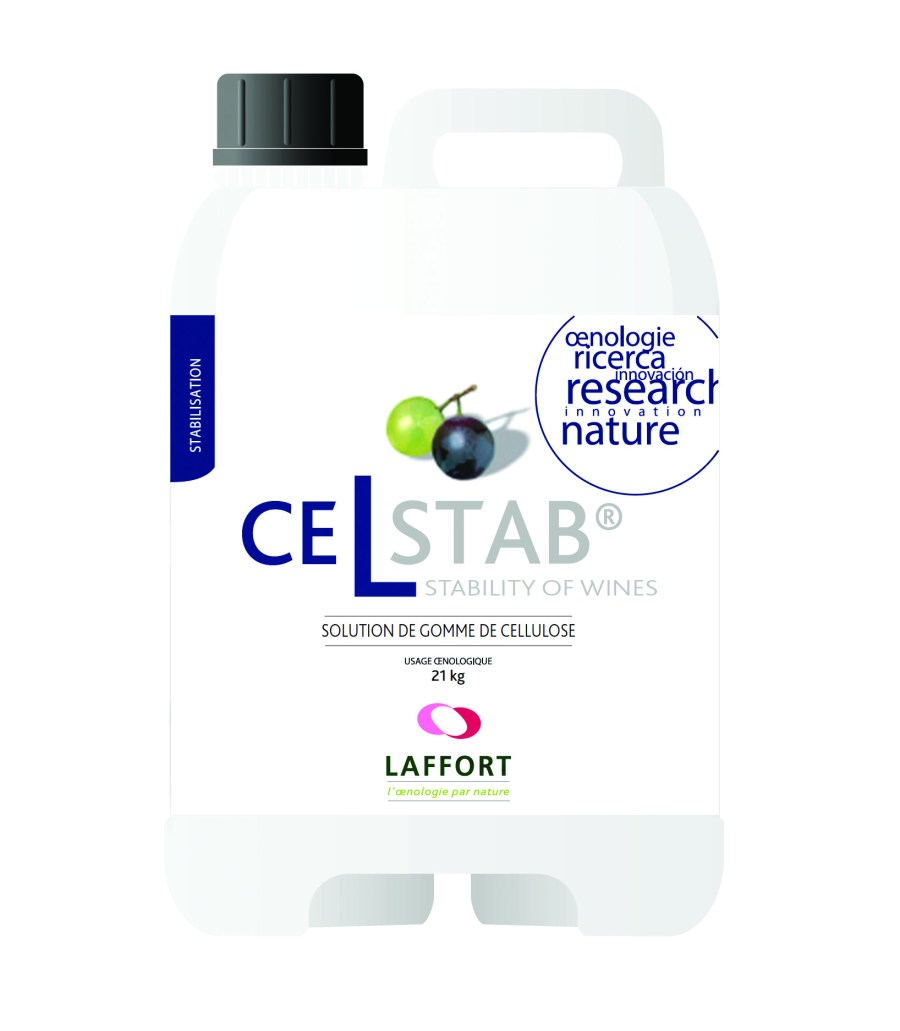Carboxymethyl Cellulose (CMC) is a ground-breaking product for cold stabilising white and rosé wines. It provides a rapid, inexpensive, and organoleptically neutral alternative for cold stability. It is cost effective, as traditional cold stabilisation is time consuming and energy intensive. CMC reduces energy cost, it is time-efficient when CMC is added to wine immediately after polish filtration, and the wine is stable and ready for bottling in 48 hours.
How does it work?
The Carboxymethyl Cellulose (CMC) in Laffort’s Celstab® inhibits potassium bitartrate crystal growth using a non-subtractive process. Nothing is removed from the wine, the crystallisation process is simply disrupted by binding of the CMC onto the crystal face for efficient long-term cold stability. CMC is unlike traditional cold stability techniques, such as chilling, bitartrate seeding, and electrodialysis which rely on, subtractive, processes, or the removal of the potassium bitartrate.
Implementation
Important to note, Celstab does not inhibit calcium tartrate crystallisation
You need to be aware of the calcium level in your wine. If the calcium is above 60ppm, your wine is at risk of developing calcium tartrate crystals.
Wine must be heat (protein) stable before Celstab addition.
Heat Stable = < 2 NTU change after wine is heated for 30 min at 80°C.
Celstab can interact with unstable proteins in the wine, forming a haze. It is important to check your heat stability after your bentonite treatment to make sure the wine is heat stable. If your wine cannot achieve heat stability, Mannostab might be a better option for your cold stability treatment.
The initial degree of instability (%DIT) needs to be less than 25%. If the DIT% is >25% the wine is too unstable for Celstab to be effective. You can use the traditional cold treatment for a short time and then retest to see if it has come into range for Celstab treatment.
Celstab is the last thing you add post-filtration. The wine must be less than 3 NTU at the time of addition. If pre-filtration is part of the preparation before bottling, Celstab is added after the cellar filtration. Celstab can interact with the components of the colloidal matrix, so you can only add it to a wine that is bottle ready. If Celstab is added to a high NTU wine, it may interact with those solids in suspension and cause haze, precipitates or filtration issues.
Celstab addition is one standard addition rate: 1mL Celstab per litre of wine. Dilute Celstab twice the dosage volume with wine and meter into the tank – mix the tank to turn wine volume over two times in order to thoroughly mix the tank. Celstab is a 10% solution so you are actually adding 100ppm of pure CMC to the wine. ISTC 50 Test to confirm cold stability.
To confirm that Celstab does cold stabilise the wine, do a bench trial with a filtered wine sample. Add 1 mL/L (0.75 mL or 750 ul) of Celstab to 750 mL wine sample and send in for the ISTC 50 test. This is a modified conductivity test, taking into account that all the tartrate ions are still in solution with Celstab treatment. You should see less than a 4 µS (micro siemens) change from minute 40 to minute 120 in a passing ISTC 50 test.
Wait at least 48 hours between Celstab addition and filtering through a 0.45 micron membrane. Celstab needs time to react and equilibrate with colloidal matrix components of the wine.
Filterability decreases initially – but recovers within the 48 hour window. If you add Celstab the morning of bottling you will have difficulty getting through the (0.45µm) sterile membrane on the bottling line.
Temperature of the wine at bottling should be >15°C. Rosé wines need to be colour stable before Celstab addition. Celstab can react with free anthocyanins in addition to the tartrates in the wine, therefore the wine will not be adequately protected and can develop precipitates if the wine is not colour stable at the time of addition.




